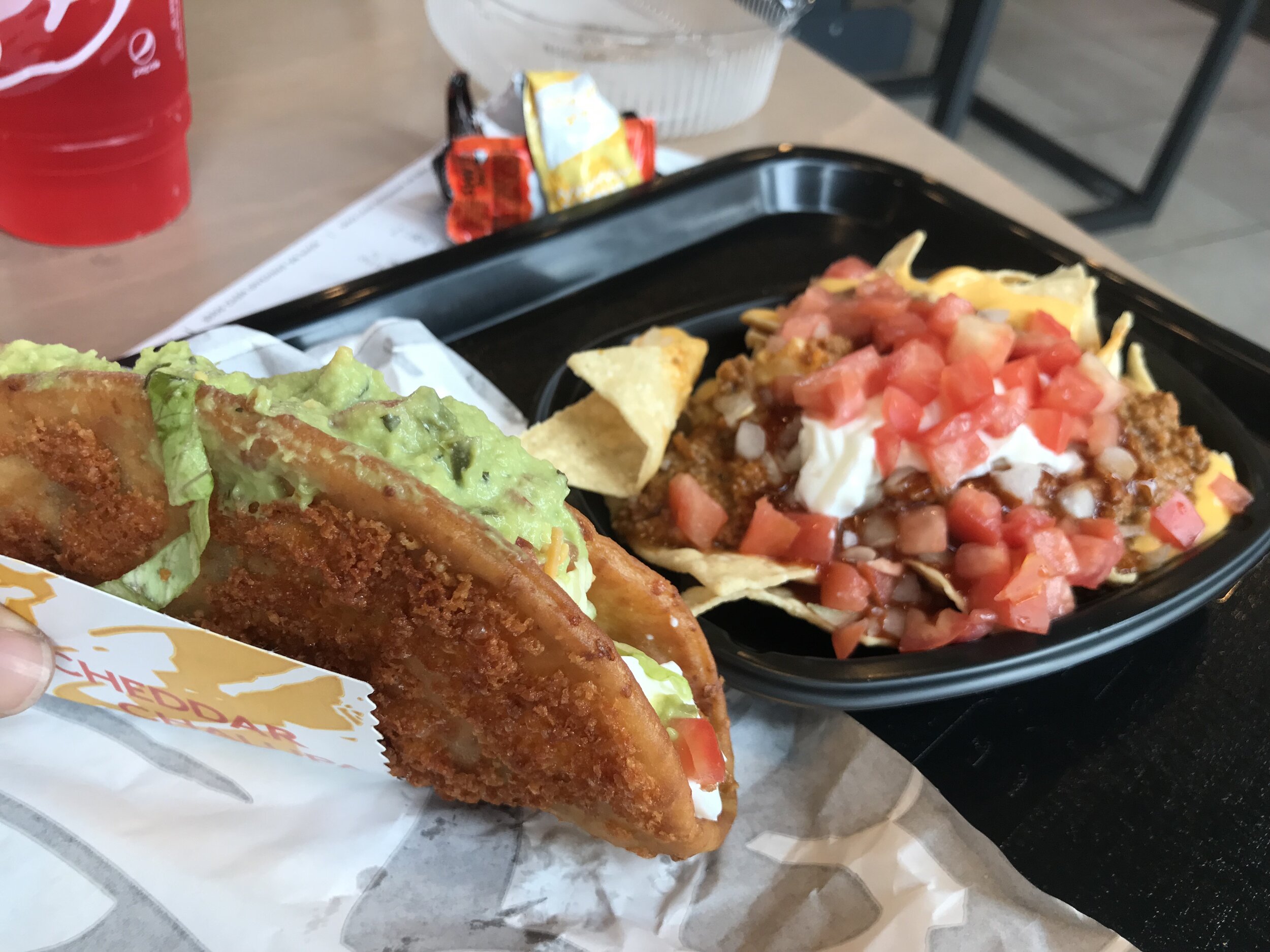The other day, I listened to this episode of the podcast Hidden Brain - You 2.0: Decide Already! and I thought that I could apply it to the lesson I learned observing a public interactive technology.
“When you’ve made an irrevocable decision, you rationalize it. Once something’s gone and gone forever, the mind gets to work figuring out why what it got is really better than what it lost.
But when a decision isn’t irrevocable, when you can remake it, and revisit it and change your mind any time, what do you do? You just ruminate about it, right? You buy a sweater, and you know you can take it back any time. And every time you put it on, you look in the mirror and you think, oh, I don’t know. Maybe it’s not a good fit. Maybe it’s not a good color. Maybe I ought to bring it back. On the other hand, if this sweater was bought at a place that won’t take it back, you look in the mirror and you say, gosh, that looks good.”
This week, I wanted to observe people using the Taco Bell’s self-service kiosk. I made the assumption that people gravitate towards the kiosk to steer away from human interaction and preserve anonymity, maybe to avoid the shame of ordering way too much food after being presented all of the available options. The line for the kiosk might look shorter at times, but it doesn’t necessarily mean you will get your food any faster. There might be the thought that using this technology would be much more efficient, resulting in a quicker transaction. I find that when I use it, I discover new ways of customizing the order, thus taking a much longer time to use it, and I order much more than I originally intended. There are so many different pages of the menu to navigate through, the amount of options becomes way too overwhelming, and after experiencing decision fatigue, I pick things “just to get it over with.”
I went to Taco Bell at what I thought was a prime lunch hour, 12:30 - 1:15pm. I sat at the table closest to the kiosk with the best viewing angle of the touch screen so that I would be in a prime location for observing other customers using at least 1 of 2 kiosks.
To my surprise, no one completed a full transaction at the kiosk in my 45 minute visit. Regardless of a 5-6 person line, all of the guests walked right past the kiosk and straight to the cashiers. One person started to flip through the menu and spent 56 seconds navigating before he sort of shook his head and went back to staring at the menus above the cashiers.
My observation of the self-service kiosk will be based on my own roughly 4-minute transaction from start to finish. The part that took the most time was deciding how to customize an item after the very long process of finding that item. In my case, I flipped through each menu to find the new Toasted Cheddar Chalupa. I was very unfamiliar with all of the ways you could customize the taco, simply fascinated with all of these sauces I never knew were available or even already included in things that I’ve eaten there several times. For my value menu nachos, I was unaware that the sauce that was included was dubbed “red sauce” - what even is that? I added the “popular add-ons:” seasoned beef, tomatoes, onions, and reduced fat sour cream.
The part that took the least amount of time was the first binary question: the decision to dine in or take out at the very beginning. The other seemingly straightforward question within the transaction was choosing a method of payment, but it had three separate screen interactions. It asked me how I would like to pay and I selected Cash, however it then prompted me to rethink my decision by stating that cash payments are made at the front counter. Perhaps by principle, I wanted to avoid the counter and complete the transaction entirely at the kiosk. After selecting debit card, it then activated the adjacent card reader and I proceeded to insert my chip. I then opted to receive my receipt via text.
Even though I completed my transaction at the kiosk, there was still confusion of which order belonged to whom. The employee called my name, and the tray I received contained a burrito and a hard taco instead of the chalupa and nachos I ordered. No matter where you order it, whether it is at the cashier, kiosk, or online, it falls within the same mix of orders and can just as easily be mistaken with another customer.
What I learned was that people are much more likely to approach the counter because of its quicker transaction as a result of withholding all of the available options in front of you. It’s not the most important decision you have to make when all of the food you order is affordable - there isn’t too much to lose if you make the “wrong” choice. Reflecting on the quote at the beginning of this blog led me to think that people are much more happy making a final decision and receiving closure when a human hands you the receipt to end the transaction. I believe that the self-service kiosk can be helpful for those with specific dietary restrictions, or are very particular and familiar with all of the ways an item can be customized.



